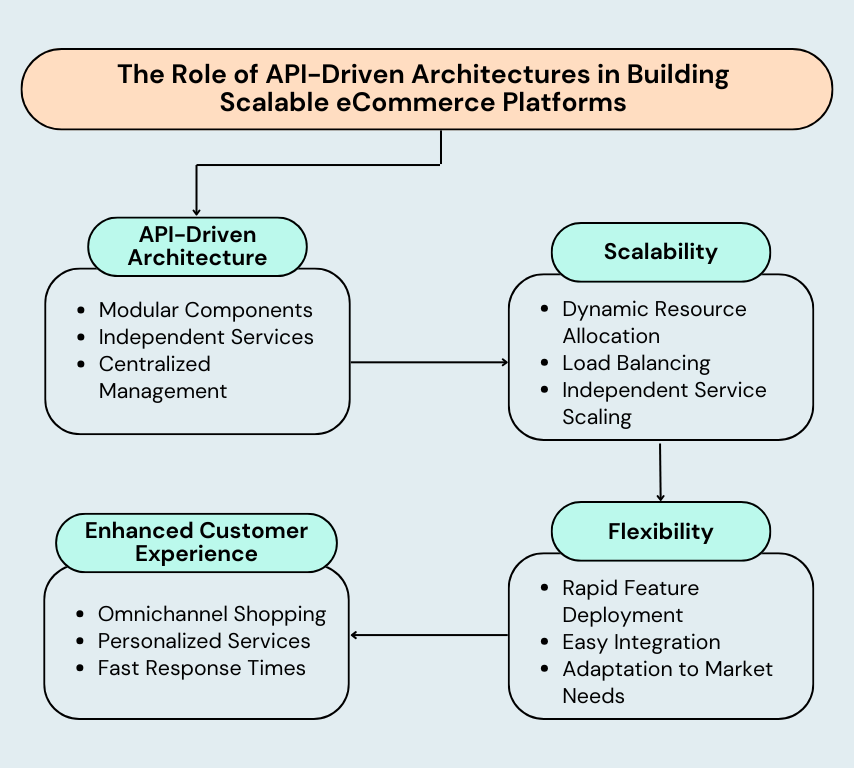Real Time Business Intelligence : The Future of Smarter eCommerce Decisions


The eCommerce industry is rising at lightning speed. This industry has reached USD $4,117 billion in 2024 and has the possibility to reach a pedestal of USD $6,478 billion by 2029 at a CAGR of 9.49%.
Nowadays, every eCommerce business has one vision, i.e., embracing flexibility, scalable solutions, and innovation to reach new customers.
However, when businesses touch new heights and customer requirements change with time, monolithic systems often present challenges.
At this moment, organizations face several challenges in scaling efficiently. But what are the relevant solutions? The best solution is to refrain from traditional monolithic architectures and introduce a new technology that grows with your business requirements.
Let’s discuss why it is relevant to shift from monolithic systems to microservices-based solutions for robust eCommerce operations.
Undoubtedly, monolithic systems were effective when they were introduced; however, they didn’t scale as the company expanded. As a matter of fact, these old systems are composed of a single, closely knitted codebase, which makes them challenging to scale as per the business requirements.
There are various technologies available in the market, which companies working in the monolithic environment can leverage and harness the opportunities.
Microservices architecture is the need of the hour in eCommerce. This framework breaks the system into more minor deployable services that don’t require any dependency.
Each service manages various business functions, including inventory management, user authentication, and payment processing.
The main benefit of using microservices is that teams can concentrate on sole components, which leads to quick development cycles and easy maintenance. Furthermore, these services can be scaled when the business grows.
Each service can be scaled independently based on demand, ensuring that resources are allocated efficiently.
The next technology on the list is cloud-native. When companies use cloud-native technologies in the eCommerce ecosystem for container orchestration, such as Kubernetes, they are able to deploy applications that are flexible in nature.
Furthermore, cloud-based systems have the power to manage high traffic loads. Additionally, they help with automatic scaling, reducing infrastructure costs, and providing better disaster recovery options.
As a matter of fact, when applications are built on cloud-native applications, they can be updated without any constraint.
APIs are the central point to connect the various parts of an eCommerce platform. These systems help companies connect with third-party tools, partners, and services.
The primary advantage offered by APIs is that there is better communication between microservices so that each component can interact with others.
For example, companies can use it for various terms, such as a customized recommendation engine and a customer loyalty program. Additionally, they can in-built multi-currency payment processors into their eCommerce platform.
Headless eCommerce helps in decoupling the front-end (customer-facing) experience from the back-end (eCommerce engine). This system provides immense freedom to companies to customize the user interface, which is an unavailable feature in the monolithic system.
This headless architecture develops a powerful shopping experience for customers on the web, mobile, social media, IoT devices, etc. The main advantage of this framework is that the system can be updated quickly without delving into the full structure.
Nowadays, businesses are implementing CI/CD pipelines to deliver new features and updates to their eCommerce systems quickly. Companies can automate the complete process of building, testing, and deploying code.
Due to this process, new changes are rolled out regularly without any risk. When organizations use this type of automation, they can deploy small updates rather than larger ones.

Companies who are in search of scalable solutions can collaborate with RBM software and pace quickly in the eCommerce sector.
The chart diagram above illustrates the major benefits of moving from monolithic systems to microservice architecture for ecommerce
Scalable solutions allow for quicker development and deployment processes, shortening the duration needed to launch new features or products. Microservices enable teams to operate autonomously on various components, whereas cloud technologies promote quicker and more dependable releases.
A versatile, expandable platform guarantees that customers have a smooth shopping experience, no matter the increase in traffic or updates to the platform. By enhancing various elements, like payment processors, search features, and product suggestions, companies can deliver a more tailored and interactive experience to their customers.
When companies rely on scalable solutions, they only have to expand the elements that require it. Furthermore, cloud services enable pay-as-you-go structures, which attract less of the initial capital investment requirement. This may lead to considerable savings as the company expands and traffic varies.
A modular system based on microservices allows companies to more easily test out new features, integrations, and services. Businesses can create new solutions without being restricted by inflexible limitations. This cultivates an environment of ongoing enhancement and allows companies to remain competitive.
Companies are more prepared to manage future growth and technological progress through these new solutions. They can collaborate with new payment providers, enter new markets, and incorporate sophisticated AI features.
Companies need to take one step ahead if they want to succeed in the eCommerce ecosystem. Monolithic systems were popular when they were launched; however, the scenario has changed today.
Nowadays, companies have to embrace the power of new technologies, such as microservices, cloud-native technologies, APIs, and headless architecture. All these systems will push the company towards new business growth.
Also, organizations who want to implement new scalable solutions in their business operations can connect with RBM software.
So, what are you waiting for? Start your new journey now with RBM Software. Get in touch with us to book a free consultation today.